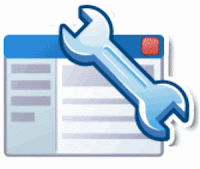FINDING YOUR BLOGGER BLOG'S SITEMAP
/
0 Comments
FINDING YOUR BLOGGER BLOG'S SITEMAP
Many Blogger had to look up in the Blogger help and forums on where can they could find a sitemap. Many of us still don't know that the atom feed produced by Blogger can be used as a sitemap itself.
 The problem was trying to remember the feed URL each time we needed to use the sitemap.
The problem was trying to remember the feed URL each time we needed to use the sitemap.
For many web sites, the robots.txt file may contain the location of a sitemap for their site. Usually, a webmaster would need to create the entry into the robots.txt file for it to be included. For Blogger users, this is done automatically for you.
1. Open up your web browser, and type in your Blogger blog’s URL.
2. At the end of the URL add robots.txt.
For example: if the URL of your blog is http://myblog.blogspot.com, then enterhttp://myblog.blogspot.com/robots.txt
Some text should now be displayed in your browser. Look for a line that starts with Sitemap:. The URL after that label is the location of your sitemap.
Using the example above, the line would look like:
Sitemap: http://myblog.blogspot.com/feeds/posts/default?orderby=updated
Back in Google’s Webmaster Tools, the domain name part of the URL would already be included, so you would just need to specify the feeds/posts/default? or derby=updated portion of the sitemap URL. If other sites are able to accept a sitemap, then you may need to include the entire URL
If in the future you are having problems with your sitemap, you can always pull up the robots.txt file to make sure your sitemap file hasn’t changed.
Many Blogger had to look up in the Blogger help and forums on where can they could find a sitemap. Many of us still don't know that the atom feed produced by Blogger can be used as a sitemap itself.
 The problem was trying to remember the feed URL each time we needed to use the sitemap.
The problem was trying to remember the feed URL each time we needed to use the sitemap.For many web sites, the robots.txt file may contain the location of a sitemap for their site. Usually, a webmaster would need to create the entry into the robots.txt file for it to be included. For Blogger users, this is done automatically for you.
To find the location of your sitemap, use the following steps:
1. Open up your web browser, and type in your Blogger blog’s URL.
2. At the end of the URL add robots.txt.
For example: if the URL of your blog is http://myblog.blogspot.com, then enterhttp://myblog.blogspot.com/robots.txt
Some text should now be displayed in your browser. Look for a line that starts with Sitemap:. The URL after that label is the location of your sitemap.
Using the example above, the line would look like:
Sitemap: http://myblog.blogspot.com/feeds/posts/default?orderby=updated
Back in Google’s Webmaster Tools, the domain name part of the URL would already be included, so you would just need to specify the feeds/posts/default? or derby=updated portion of the sitemap URL. If other sites are able to accept a sitemap, then you may need to include the entire URL
If in the future you are having problems with your sitemap, you can always pull up the robots.txt file to make sure your sitemap file hasn’t changed.
